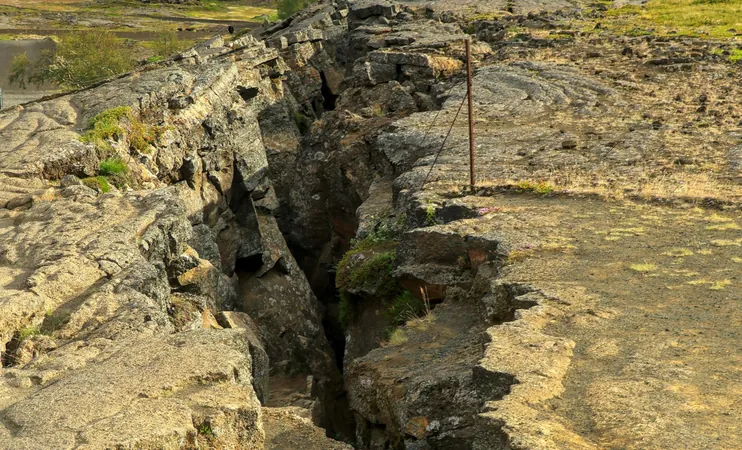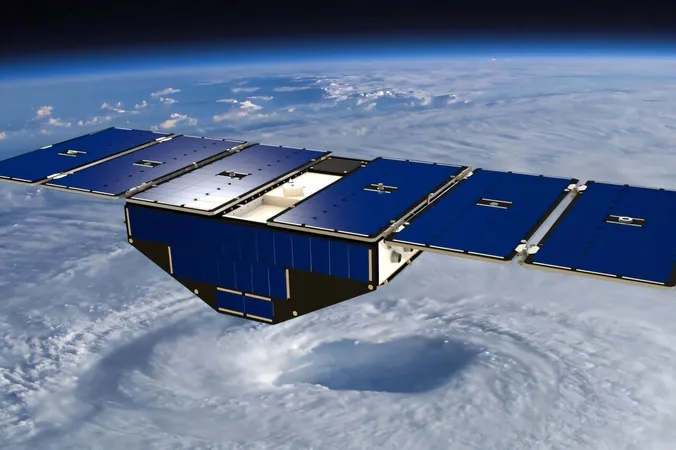
Is India on the Brink of a Major Split? Geologists Uncover Shocking Tectonic Changes
2025-05-31
Author: Arjun
A Groundbreaking Discovery at the AGU Conference
A revolutionary geological study presented at the recent American Geophysical Union (AGU) conference is sending shockwaves through the scientific community: India may be on the verge of splitting into two. Supported by seismic data and unique isotope analysis, researchers have uncovered evidence suggesting that a portion of the Indian Plate is experiencing delamination—a mysterious process where the lower section of a tectonic plate detaches and sinks into the Earth’s mantle.
New Insights into Himalayan Formation
For over 60 million years, the Indian Plate has been colliding with the Eurasian Plate, giving rise to the majestic Himalayas, the tallest mountain range on the planet. Scientists have long debated whether this plate merely slides beneath Tibet or if it partially submerges into the mantle. This new study introduces a thrilling twist: the Indian Plate appears to be physically tearing apart, creating a vertical fracture where a denser lower segment is peeling away from the upper crust. This delamination process could be allowing hot mantle material to seep into the fracture, drastically changing the geological landscape beneath the surface.
Unveiling Hidden Dynamics Through Innovative Techniques
This groundbreaking research relied on an extensive analysis of earthquake waves and helium isotope ratios from springs in southern Tibet. Researchers discovered helium-3—an isotope linked to the Earth’s mantle—unexpectedly rising to the surface, suggesting that mantle material is moving in ways previously thought impossible. Dr. Douwe van Hinsbergen of Utrecht University remarked, "We didn’t know continents could behave this way; this is foundational for solid Earth science." It appears India is rewriting the rules of geology.
The Complex Anatomy of a Tectonic Break
Unlike a solid block of rock, the Indian Plate is a patchwork of varying layers, from thin oceanic crust to thick continental formations. Prior to its collision with Eurasia, this geographical complexity made it vulnerable to stress fractures. Though geologists had theorized about the possibility of tectonic plates breaking due to immense internal pressure, this study presents the first direct evidence of such a phenomenon in an active subduction zone.
Examining Stress Near Bhutan
Stanford University's Simon Klemperer studied a particularly unstable area near Bhutan, where the subduction zone's curves suggest extreme stress. By analyzing isotope signals from thermal springs, his team identified a distinct boundary: south of it, helium signatures appeared crustal, while northward they were mantle-derived. Strikingly, three springs south of the line also revealed mantle characteristics, indicating a fracture in the Indian Plate has allowed hot mantle material to rise through the breach.
Implications for Earthquake Risk in the Himalayas
While the notion of a continent tearing apart might seem like fiction, its implications for real-world seismic activity are significant. The Himalayan region is already at high risk for earthquakes due to the ongoing stress from colliding tectonic plates. The revelation of delamination adds an unexpected layer of complexity: shifting stresses and the influx of mantle material could alter the distribution of stress in unpredictable ways. This could potentially lead to previously unexplained fault line activity and might influence the intensity and frequency of future earthquakes.





 Brasil (PT)
Brasil (PT)
 Canada (EN)
Canada (EN)
 Chile (ES)
Chile (ES)
 Česko (CS)
Česko (CS)
 대한민국 (KO)
대한민국 (KO)
 España (ES)
España (ES)
 France (FR)
France (FR)
 Hong Kong (EN)
Hong Kong (EN)
 Italia (IT)
Italia (IT)
 日本 (JA)
日本 (JA)
 Magyarország (HU)
Magyarország (HU)
 Norge (NO)
Norge (NO)
 Polska (PL)
Polska (PL)
 Schweiz (DE)
Schweiz (DE)
 Singapore (EN)
Singapore (EN)
 Sverige (SV)
Sverige (SV)
 Suomi (FI)
Suomi (FI)
 Türkiye (TR)
Türkiye (TR)
 الإمارات العربية المتحدة (AR)
الإمارات العربية المتحدة (AR)